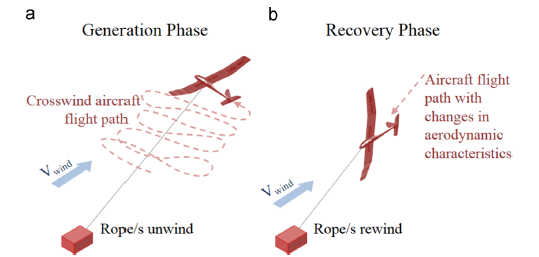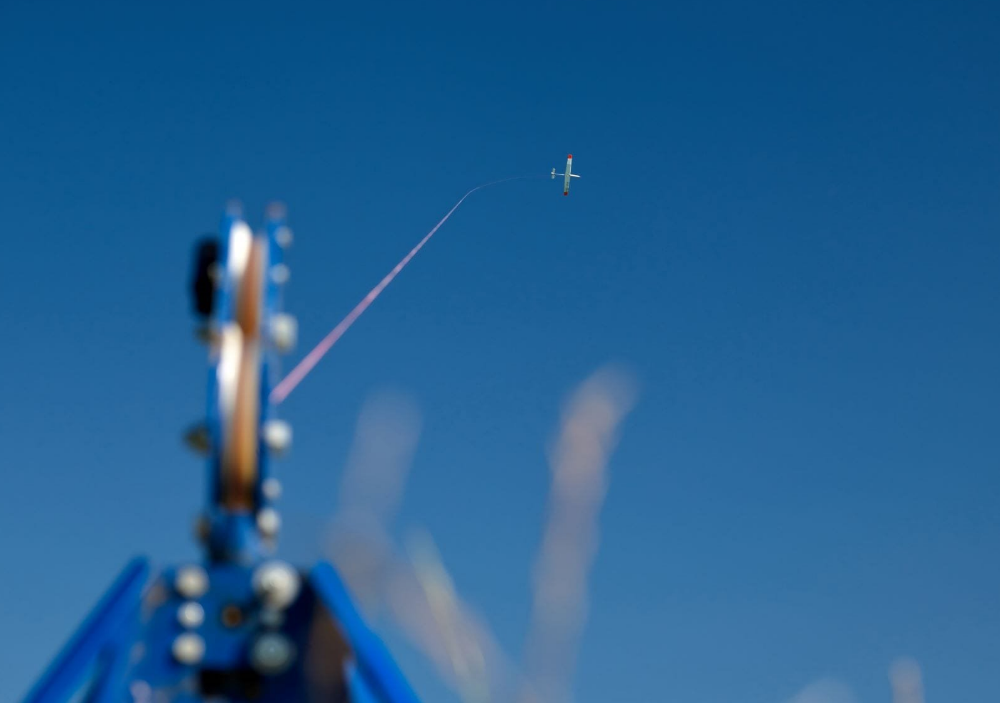Probleemstelling:
Airborne wind energy (AWE) is an emerging and potentially disruptive technology that aims at converting wind energy by flying crosswind patterns with a tethered flying device (See Figure 1). It has the potential to increase the wind energy yield by capturing wind energy at locations and heights unreachable for conventional horizontal-axis wind turbines. This technology can thus have a strong impact on the transition to a sustainable energy system by generating more green electricity, with higher availability and at a lower cost, which is one of the main limitations today.

Figure 1: Two phases of a ground generation AWE system. [source: Airborne Wind Energy Systems: A review of the technologies. Cherubini A. et al.]
An AWE aircraft performs a highly dynamic flight maneuver (e.g. a figure-8 pattern) when compared to conventional aircraft. The transition between generation and recovery phase is additionally highly dynamic. Simulation of these AWE systems requires accurate dynamic models for all systems involved; these include the ground station, tether (connecting cable), and the aircraft. Several simulations frameworks have been developed for this purpose. However, these simulation tools are based on simplified steady aerodynamic models for the aircraft. On the other hand, due to the aircraft's dynamic maneuvers, the aerodynamic field is unsteady. Research in our team is directed towards simulating the unsteady aerodynamic behavior of AWE systems. However, current simulations are based on a simplified trajectory, such as a steady circular motion. In this thesis, a first step will be taken to enable simulation of realistic trajectory and the coupling of dynamic tools, with high fidelity aerodynamic models.

Figure 2: Clear picture of all components involved: ground station, tether, aircraft [Source: Ampyx Power B.V.]